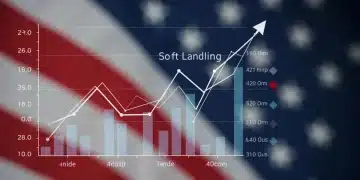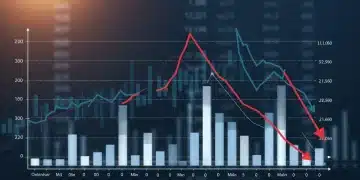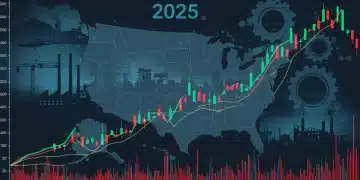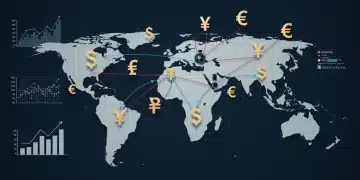US Economic Impact: Europe’s Conflict Repercussions

The US economy faces significant repercussions from the ongoing European conflict, manifesting in elevated inflation, disrupted supply chains, and evolving trade dynamics.
The ongoing conflict in Europe has sent ripples across the global economy, and the United States, despite its geographic distance, is not immune to these profound shifts. Understanding US economic repercussions Europe faces from this instability is crucial for policymakers, businesses, and citizens alike. This article delves into the intricate ways the conflict is reshaping the American economic landscape, from inflation to energy markets and beyond.
Inflationary Pressures and Consumer Impact
The conflict in Europe has ignited a new wave of inflationary pressures that directly impact American consumers. Even before the escalation, the US was grappling with rising prices, but the geopolitical instability has exacerbated this trend, pushing inflation to levels not seen in decades.
This surge in prices is not merely a statistical anomaly; it translates directly into higher costs for everyday goods and services, eroding household purchasing power. From the grocery store to the gas pump, Americans are feeling the pinch, forcing many to adjust their budgets and spending habits.
Energy Price Volatility
One of the most immediate and visible effects of the conflict has been the dramatic increase in energy prices. Europe’s reliance on Russian energy supplies meant that any disruption would have global consequences, and the US has certainly experienced this.
- Crude Oil Surges: Global oil prices soared following the invasion, impacting gasoline prices across the US.
- Natural Gas Spikes: Although the US is a net exporter of natural gas, global price increases ripple through domestic markets and influence industrial costs.
- Transportation Costs: Higher fuel prices directly increase the cost of transporting goods, contributing to overall inflation.
- Utility Bills: Energy price hikes translate into higher utility bills for homes and businesses nationwide.
The volatility in energy markets creates uncertainty for businesses and consumers, making long-term planning challenging. This instability can deter investment and slow economic growth, further complicating the inflation outlook.
In essence, the conflict’s influence on energy markets is a primary driver of the inflationary environment in the US, affecting everything from manufacturing costs to the daily commute. Understanding these direct links is crucial for grasping the broader economic picture.
Disrupted Supply Chains and Trade Dynamics
The conflict has significantly aggravated existing vulnerabilities in global supply chains, leading to further disruptions that impact US industries and consumers. Even as the world was recovering from pandemic-induced bottlenecks, new challenges emerged from the European crisis.
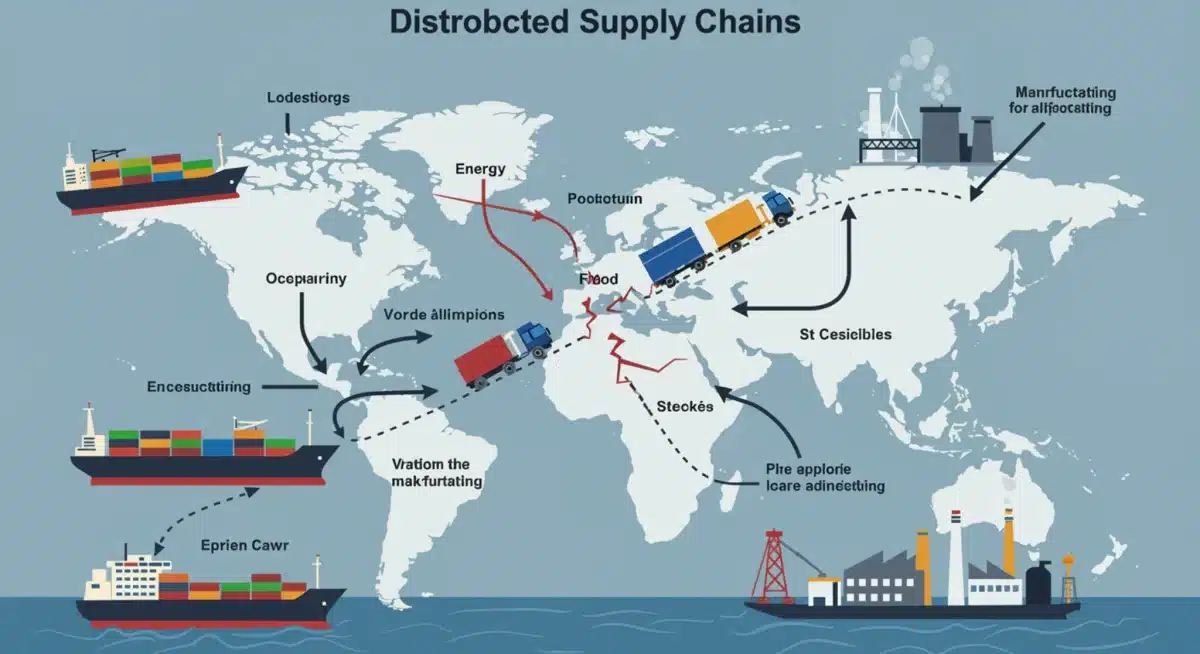
Key trade routes have been affected, and the availability of critical raw materials has become precarious. This has forced US companies to seek alternative suppliers, often at higher costs, or face production delays and shortages.
Impact on Key Commodities
Beyond energy, the conflict has had a profound effect on the availability and pricing of several other vital commodities. Europe is a significant producer and transit point for many essential goods, and disruptions there have global ramifications.
- Agricultural Products: Ukraine and Russia are major global suppliers of wheat, corn, and sunflower oil. The conflict has severely impacted their exports, leading to global food price inflation and concerns about food security, which indirectly affects US food markets through global pricing.
- Industrial Metals: Russia is a key producer of metals like palladium and nickel, crucial for automotive and electronics manufacturing. Supply reductions have driven up prices and created shortages for US industries.
- Chemicals and Fertilizers: Disruptions to chemical and fertilizer production and export from the region have driven up costs for US agriculture, ultimately increasing food production expenses.
These commodity shocks reverberate throughout the US economy, affecting everything from the cost of manufacturing automobiles to the price of bread on supermarket shelves. Businesses are struggling to absorb these increased costs, often passing them on to consumers, further fueling inflationary pressures.
The complexity of modern supply chains means that a disruption in one region can have a cascading effect worldwide. For the US, this means higher input costs for manufacturers, reduced availability of certain products, and ultimately, a more expensive marketplace for consumers.
Financial Market Volatility and Investor Confidence
The ongoing conflict in Europe has injected significant volatility into global financial markets, directly influencing investor confidence and asset valuations in the United States. Uncertainty is a major deterrent for investment, and the geopolitical landscape currently presents an abundance of it.
Stock markets have experienced sharp fluctuations, and bond yields have reacted dynamically to the evolving situation. This creates a challenging environment for investors and can impact retirement savings and investment portfolios across the US.
Shifts in Investment Strategies
In response to heightened geopolitical risks, many investors are re-evaluating their portfolios, leading to shifts in asset allocation. This often involves a flight to safety, with increased demand for traditional safe-haven assets.
- Increased Demand for US Treasuries: Despite domestic inflation concerns, US Treasury bonds often see increased demand during global crises due to their perceived safety and liquidity.
- Commodity Price Swings: While some commodities, like oil and gas, have seen price surges, others may experience downturns as global demand forecasts shift.
- Sectoral Reallocation: Investors may shift away from sectors heavily exposed to European markets or those reliant on disrupted supply chains, favoring more domestically focused or defensive industries.
- Currency Fluctuations: The US dollar often strengthens during global instability as investors seek refuge in the world’s primary reserve currency, impacting US exports and imports.
The financial market’s response to the European conflict underscores the interconnectedness of global economies. US companies with significant international operations, particularly in Europe, face direct revenue and profit impacts from the instability, which can then be reflected in their stock performance.
Ultimately, sustained market volatility can dampen economic growth by making it more expensive for businesses to raise capital and by reducing consumer and business confidence, potentially leading to reduced spending and investment.
Geopolitical Realignment and US Economic Policy
The European conflict has not only triggered immediate economic shocks but has also prompted a significant geopolitical realignment, compelling the United States to re-evaluate and adjust its economic policies. This involves a complex interplay of diplomacy, defense spending, and trade strategies.
The US government is navigating a delicate balance between supporting allies, imposing sanctions on adversaries, and mitigating domestic economic fallout. This strategic recalibration has long-term implications for American industry, technology, and international trade relations.
Strategic Policy Responses
In response to the evolving geopolitical landscape, the US has implemented several key policy measures aimed at both addressing the conflict’s immediate consequences and positioning the nation for future challenges.
- Sanctions and Export Controls: The US, in coordination with allies, has imposed extensive sanctions on Russia, targeting its financial institutions, technology sectors, and key individuals. These measures aim to cripple the Russian economy but also carry risks of retaliatory actions and global economic reverberations.
- Increased Defense Spending: The conflict has underscored the importance of national security, leading to calls for increased defense budgets in the US and among NATO allies. This can stimulate certain sectors of the US economy but also diverts resources from other areas.
- Energy Security Initiatives: Efforts to reduce reliance on foreign energy sources and bolster domestic production have gained renewed urgency. This includes exploring new drilling, investing in renewable energy, and diversifying supply chains for critical minerals.
- Support for Allies: Financial and military aid to Ukraine and other European allies represents a significant commitment, impacting US federal spending and international relations.
These policy decisions reflect a strategic pivot, emphasizing national security and economic resilience in an increasingly unpredictable world. The long-term effects of these realignments will shape US economic priorities and international partnerships for years to come.
The US government’s proactive stance in this conflict, through both economic pressure and diplomatic engagement, demonstrates a commitment to global stability, even as it navigates the complex domestic economic consequences.
Impact on US Industries and Employment
The economic repercussions of the European conflict are not uniform across all sectors of the US economy. While some industries face significant headwinds, others may experience unexpected opportunities or shifts in demand. This uneven impact influences employment trends and regional economic performance.
Businesses are adapting to new realities, from navigating supply chain snarls to managing increased operating costs. The ability of various industries to pivot and innovate will largely determine their resilience in this evolving economic climate.
Sector-Specific Challenges and Opportunities
Different sectors within the US economy are experiencing distinct challenges and, in some cases, new avenues for growth as a result of the European conflict.
- Manufacturing: Industries reliant on imported raw materials or components, such as automotive and electronics, face increased costs and production delays. However, some domestic manufacturers may benefit from reshoring efforts and reduced foreign competition.
- Agriculture: While global food price inflation benefits some US agricultural producers, they also contend with higher fertilizer and energy costs. Export opportunities may arise in response to global shortages.
- Energy Sector: US oil and gas producers have seen increased demand and higher prices, leading to profitability. However, the push for renewable energy may accelerate, creating opportunities in clean energy technologies.
- Defense and Cybersecurity: Increased geopolitical tensions have spurred higher demand for defense equipment and cybersecurity services, benefiting companies in these sectors.
- Technology: The tech sector faces challenges from supply chain disruptions for components but may also see increased demand for digital transformation tools and remote work solutions.
These shifts have direct implications for the US labor market. Some sectors may experience job growth, while others could face cutbacks or require workforce retraining to adapt to new demands. The conflict underscores the need for a flexible and adaptable workforce.
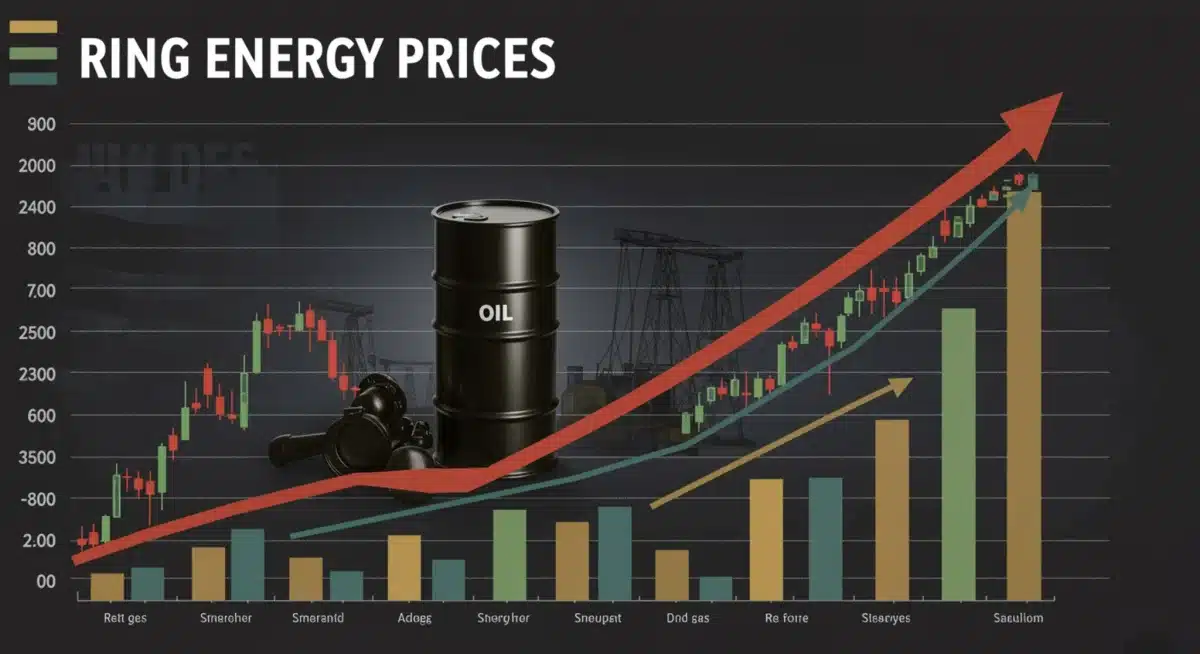
Overall, the economic landscape for US industries is dynamic, requiring careful monitoring and strategic adjustments to mitigate risks and capitalize on emerging opportunities.
Long-Term Economic Outlook and Resilience
Examining the long-term economic outlook for the US in the context of the European conflict requires considering not just immediate impacts but also structural changes and adaptive capacities. The global economy is undergoing a significant transformation, and the US role within it is evolving.
While the immediate future presents challenges, the US economy possesses inherent strengths and a capacity for innovation that can foster resilience. However, navigating this complex period will require strategic foresight and adaptive policies to ensure sustained growth and stability.
Building Economic Resilience
The conflict has highlighted the vulnerabilities of highly interconnected global systems, prompting a renewed focus on building greater domestic and allied economic resilience. This involves a multi-faceted approach to reduce dependencies and strengthen core economic foundations.
- Diversification of Supply Chains: Reducing reliance on single points of failure by diversifying sources for critical goods and materials is a key strategy. This includes exploring nearshoring and friend-shoring initiatives.
- Investment in Domestic Production: Policies aimed at strengthening domestic manufacturing capabilities, particularly in strategic sectors like semiconductors, energy, and defense, are gaining traction.
- Energy Independence and Transition: Accelerating the transition to renewable energy sources and enhancing domestic fossil fuel production aims to insulate the US from global energy shocks.
- Strategic Alliances and Trade Agreements: Strengthening economic partnerships with reliable allies can create more stable and secure trade networks, mitigating risks associated with geopolitical tensions.
- Fiscal and Monetary Policy Adjustments: Central banks and governments are continually adjusting policies to combat inflation while supporting economic growth, aiming for a soft landing amidst global headwinds.
The long-term economic trajectory of the US will largely depend on its ability to adapt to these new geopolitical and economic realities. Investing in innovation, human capital, and robust infrastructure will be crucial for maintaining competitiveness and fostering sustainable growth.
Ultimately, while the conflict in Europe presents significant challenges, it also serves as a catalyst for the US to reinforce its economic foundations and forge a more resilient and adaptable future.
| Key Economic Impact | Brief Description |
|---|---|
| Inflation Surge | Conflict exacerbates US inflation through higher energy and commodity prices, impacting consumer purchasing power. |
| Supply Chain Disruptions | Existing bottlenecks worsened, affecting availability and cost of raw materials and finished goods for US industries. |
| Financial Market Volatility | Global uncertainty leads to stock market fluctuations, shifts in investment strategies, and US dollar strengthening. |
| Geopolitical Policy Shifts | US economic policy recalibrates with sanctions, increased defense spending, and energy security initiatives. |
Frequently Asked Questions About US Economic Repercussions
The European conflict directly fuels US inflation primarily through increased energy and commodity prices. Disruptions to oil, natural gas, and agricultural exports from the conflict region drive up global costs, which are then passed on to American consumers through higher gas prices, food costs, and manufacturing expenses.
The conflict exacerbates existing vulnerabilities in global supply chains by disrupting key trade routes and limiting the availability of critical raw materials like industrial metals and agricultural products. This leads to increased costs, production delays, and potential shortages for various US industries and consumers.
Yes, US financial markets experience significant volatility. Geopolitical uncertainty often leads to fluctuations in stock markets and bond yields. Investors may shift towards safe-haven assets, and the US dollar tends to strengthen, impacting investment portfolios and the cost of international trade for American businesses.
US economic policy is responding through a combination of sanctions against Russia, increased defense spending, and initiatives to bolster energy security and diversify supply chains. The aim is to support allies, destabilize adversaries, and build greater domestic economic resilience against future shocks.
Long-term implications include accelerated efforts toward energy independence, reshoring of critical industries, and strengthening alliances to secure trade routes. The US aims to build greater economic resilience by diversifying supply chains and investing in domestic production and innovation, adapting to a more fragmented global economy.
Conclusion
The ongoing conflict in Europe has undeniably cast a long shadow over the global economy, with significant and multifaceted repercussions for the United States. From the pervasive pressures of inflation driven by soaring energy and commodity prices to the complex entanglements of disrupted supply chains, the American economic landscape is undergoing profound shifts. Financial markets continue to grapple with volatility, reflecting deep-seated investor uncertainty, while US economic policy is actively recalibrating to address both immediate challenges and long-term strategic imperatives. While the path ahead remains uncertain, the necessity for adaptability, strategic foresight, and resilient economic frameworks has never been more apparent. The US response, characterized by both immediate interventions and a focus on long-term structural adjustments, will ultimately define its economic trajectory in this new geopolitical era.
